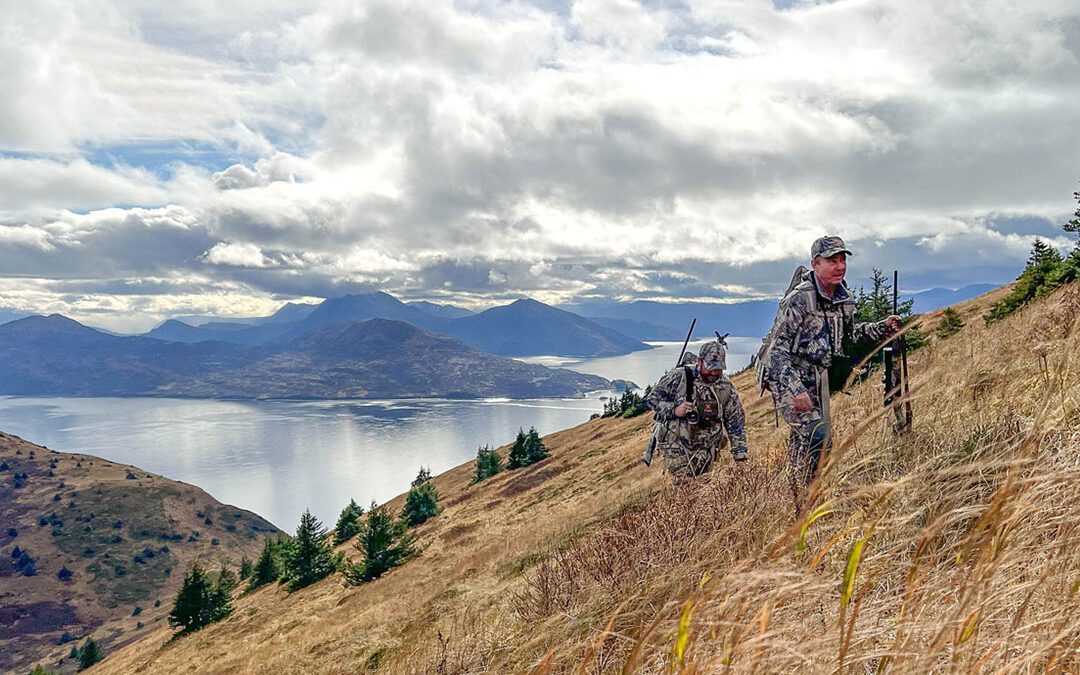Mark, Richard and I dangle from toes and fingers on a steep slope 2,100 feet above the surf. We’ve finally broken out of the claustrophobic alder thickets, and behind us the view is spectacular—the islands of the Kodiak archipelago rise green and brown and black from dark blue water, puffs of whale-spouts rising here and there around the bay. Somewhere down to our right the brown bear that scented us as we crawled through his thicket has moved around the hill, a good thing because we’re hunting 180-pound Sitka deer, not 1,500-pound brown bears, and the light bullets in our rifles likely would only annoy him further.
We’ve been climbing all morning, hours longer than the route to the deer fields should have taken, but in our inexperience, we missed the bear trail we were aiming for and ended up bushwhacking the whole way up. So it goes on Kodiak. By the end of the day, we’ll have stalked and missed a good buck, covered way too much ground, beaten our legs to quivering jelly and still not managed to put a single scratch on our rifles. And trying to scratch our rifles, believe it or not, is the point of it all.

When Benelli’s engineers wanted to field test their new super-hard “BE.S.T.” diamond surface coating for the company’s shotguns and rifles, they decided to send some guns and gunwriters, including your humble correspondent, to Kodiak Island, Alaska, for a Sitka deer and sea duck hunt. Rocks, saltwater, boats and blood all rank high on the list of things you shouldn’t rub on a nice firearm, and Kodiak is home to a world-class variety of those and other scratch-dent-and-ding hazards. So, on a cool fall day in mid-October eight of us set out on a 65-foot boat from the Kodiak dock, each armed with a Benelli Lupo rifle and Super Black Eagle shotgun sporting the “BE.S.T.” finish, headed for adventure.
On Kodiak, the weather determines what and where you hunt—bright, clear days are for deer, rainy days for ducks. The first three days dawned sunny and bright, so up into the island hills we went. The first day our big climb produced a good stalk on a nice buck but ended in a miss on a difficult shot when the buck moved back into thick cover. We made the long climb back down to the beach and resolved to try again in the morning.
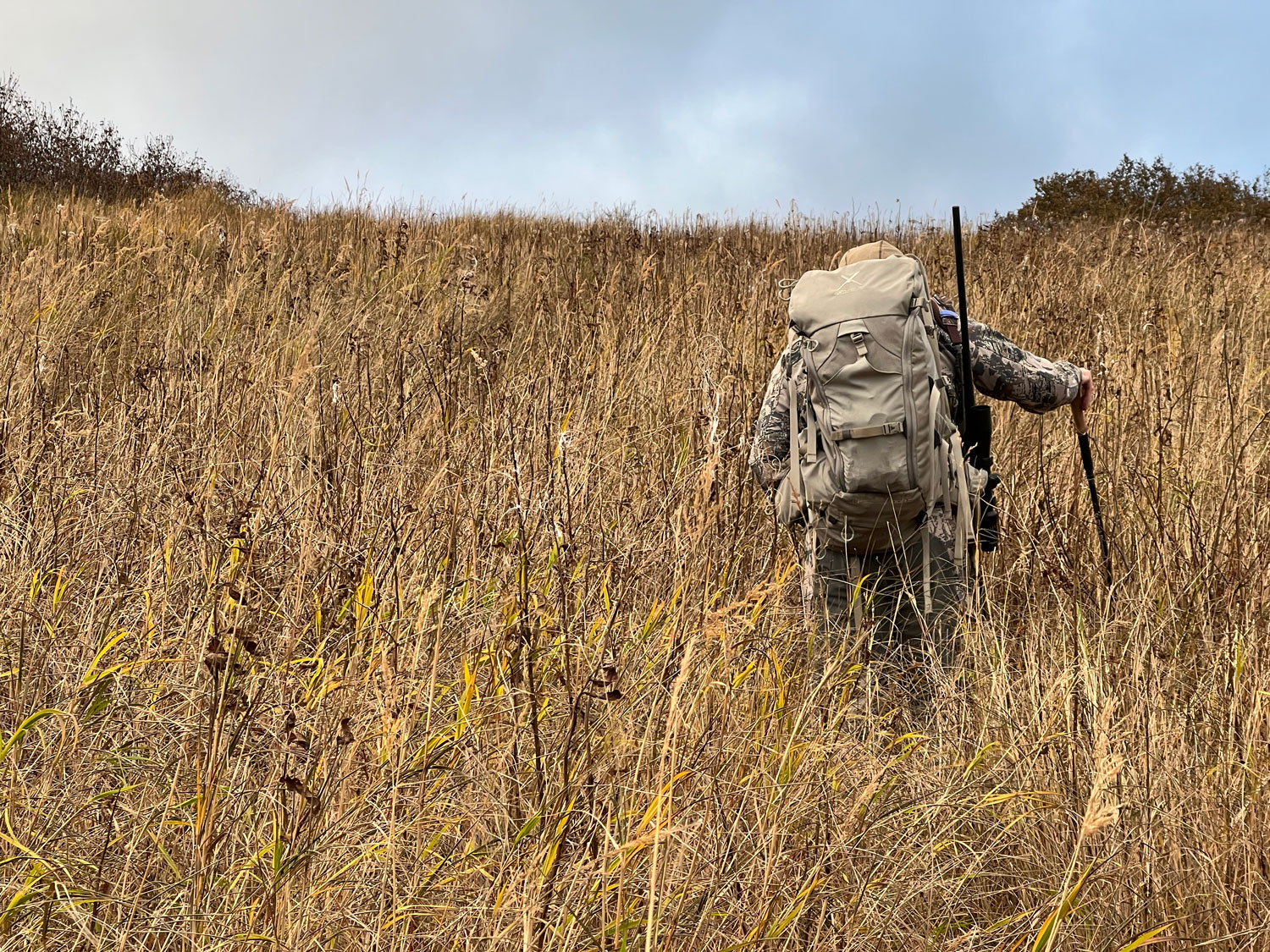
After the hard lessons of that first climb, we tried each day to follow bear trails when we could, but still we found ourselves doing a lot of bushwhacking, pushing through alders and tall grass in search of high ground from which to glass. Unlike the rut when the bucks come down close to the beaches to chase does, we knew we’d need to get up into the short grass if we were to have a chance. Day after day we climbed and scrambled through terrain that was often chock-full of fresh deer sign, but all we saw were a few does and small bucks at distances usually exceeding 800 yards.
One of the hardest aspects of locating Sitka deer, we discovered, was distinguishing short grass from six-foot-high thickets at the distances we were glassing. Several times we watched promising terrain for hours only to discover, once we’d walked across to it, a thorny mess in which a buck could have stood on its hind legs and yodeled without being seen. The deer were in there, of course, along with quite a few bears, but they were a lot better than we were at working the cover.
The comical aspects of our plight were brought home on more than one occasion when we returned to the boat to hear from the crew that they’d watched big bears squirt out of the other side of hillside thickets as we entered them. We never saw or even heard those bears, but they couldn’t have been more than 30 or 40 yards away, and it seems very likely the deer were performing exactly the same kind of maneuvers as we stalked, moving slowly away from and around us, then returning to their business once we’d passed. Kodiak knows how to win, and how to teach humility.
In the end, our group did manage to take a couple of deer, including a nice old buck one of our guys shot as it stepped out of a thicket after a doe. Another group had luck using a Wisconsin-like driving technique, sending one hunter into thickets as other hunters watched the surrounding corridors. And in retrospect, that’s probably how I’d approach Sitka deer if I hunted them again outside the rut—let one hunter work through the terrain while another watches the likely escape routes. Long-range shooting might be effective as well, but I like the challenge of stalking better.
The big bears, interestingly enough, certainly added a lot of spice to the hunting but they never actually posed a problem. We saw many at various distances, but never up close even when we were in thick terrain covered in fresh bear sign. As ship captain Travis Lawson told us in his excellent pre-hunt bear talk, as long as the bears could see, hear or smell us, they appeared to do their level best to stay out of our way. At the same time, there’s no denying that having bears around us was never out of mind. They were an essential part of the general atmosphere. Their presence and the chance of bumping into one made Kodiak deer-stalking feel very much like Tanzania bird-shooting—you get all the fun of chasing what you’re chasing, and a lot of the fun of what might decide to chase you. Hard to beat.
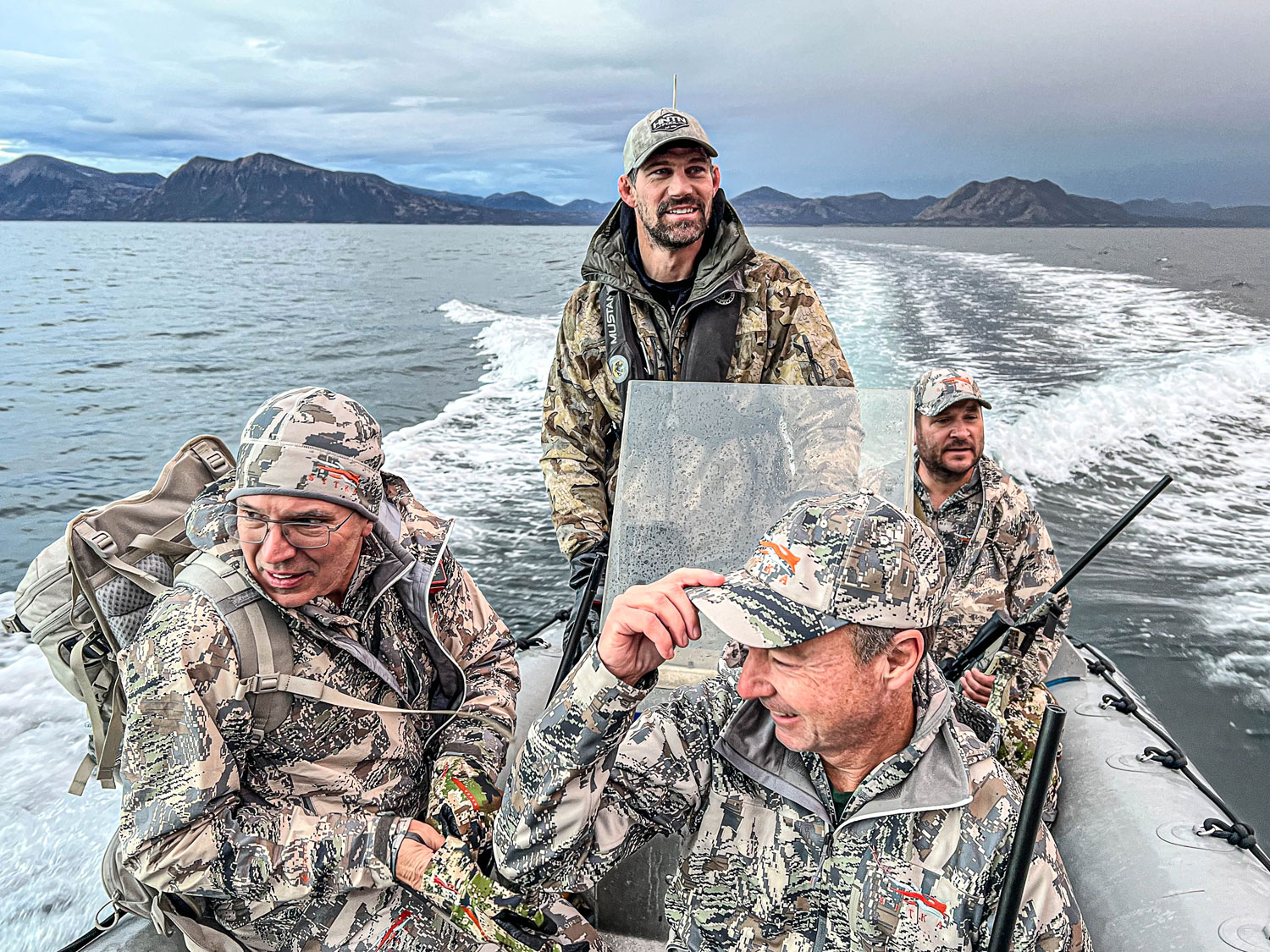
After three days of deer hunting, the weather turned rainy and windy—not great for deer but perfect for ducks. I have to admit I was ready for the change. While our rifles had made it through the Kodiak climbs, slides, seawater and thorns without a scratch or speck of rust, every muscle and bone in my body was starting to complain. Some sitting time on a coastal rock sounded pretty good.
If you’ve never shot sea ducks, a trip to Kodiak is worth it just for the variety and challenge sea ducks present. Species vary from island to island and even from rock to rock within the Kodiak archipelago, and also depend on the time of year. Our strategy generally was to hop from place to place, shooting a few hours at each. On a typical morning we might see harlequins early followed by one or more types of scoter, some green winged teal, a few mergansers, maybe some others. Other locations were better for puddle ducks—mallards, goldeneye, gadwall and the like. Our decoy spread and blinds were minimal—five or six decoys 20 yards from shore, and for a blind we just squatted amongst big chunks of seaweed-strewn black rocks. Retrieves were made either by calling one of the crew to come by with the skiff or, if tide and wind were favorable, just waiting until a bird washed up on shore.
We were all anxious to have a nice drake harlequin mounted if we were lucky enough to see a few. The limit on harlequins is four per year, and the drakes in particular make spectacular mounts—the colors reminiscent of a male wood duck, though perhaps a bit more muted. As it turned out, the first flight we saw the first morning were harlequins, six or eight ducks coming fast and low from our left. I looked for a drake’s black, white and red head, swung ahead a couple of feet, and dropped one. As I shot, someone else dropped another—also a drake. Wow! We looked at each other and let loose a little cheer, which was cut short by a call of “More ducks left!” Ten minutes later we had three harlequin drakes and a surf scoter down; by the time we left the rock for lunch, we all had harlequins along with several other species.
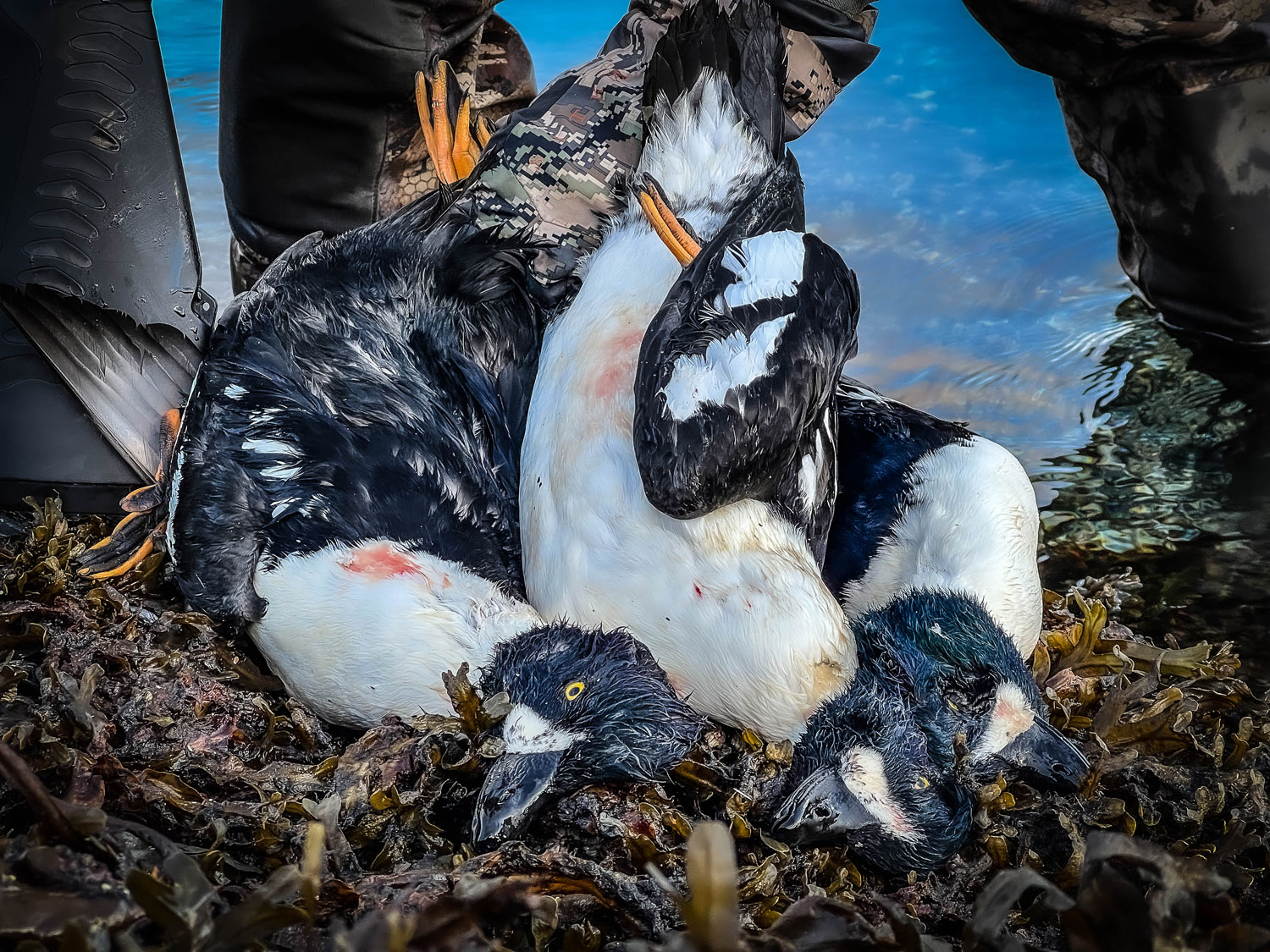
On one memorable afternoon hunt the skiff dropped three of us off on a small triangular pile of rocks about the size of a house. We put the decoys in a narrow channel between the rocks and shore, then one of us sat over the channel, one on the top of the pile and I took a spot looking out to the bay. For two hours we shot a near-constant stream of ducks that arrived from every conceivable angle like a well-choreographed sporting clays course stocked with exotic ducks. If I’d been a little more confident in my duck identification skills, I might well have shot up to Alaska’s generous limits on both sea and puddle ducks, and I think some of the other guys did. As it was, I had a great time trying to identify sex and species in time to get a shot, and when I connected on the occasional long shot out over the bay and held a new-to-me species in my hand for the first time, I was truly glad I’d made the trip. Kodiak can be tough, to be sure, but it does have a way of paying you back.
Amidst all the sea-duck fun we didn’t, of course, forget our mission to try to destroy our firearms. The big slippery blocks of black basalt we hunted ducks from offered endless opportunities to drop our guns, which probably would have happened even if we hadn’t done it on purpose. I have to say I’ve never seen anything like it. I leaned my gun against sharp rocks. I let the barrel drop when I put the gun down. I let sea spray splash over it when we rode to and from the boat in the open skiff. I didn’t clean anything. And as I sit writing this article I’m looking at that Benelli 12-gauge in my gun rack, still uncleaned, and its finish is like new. So is the rifle I hunted deer with. Pristine. Go figure. That may be the only battle Kodiak couldn’t find a way to win.
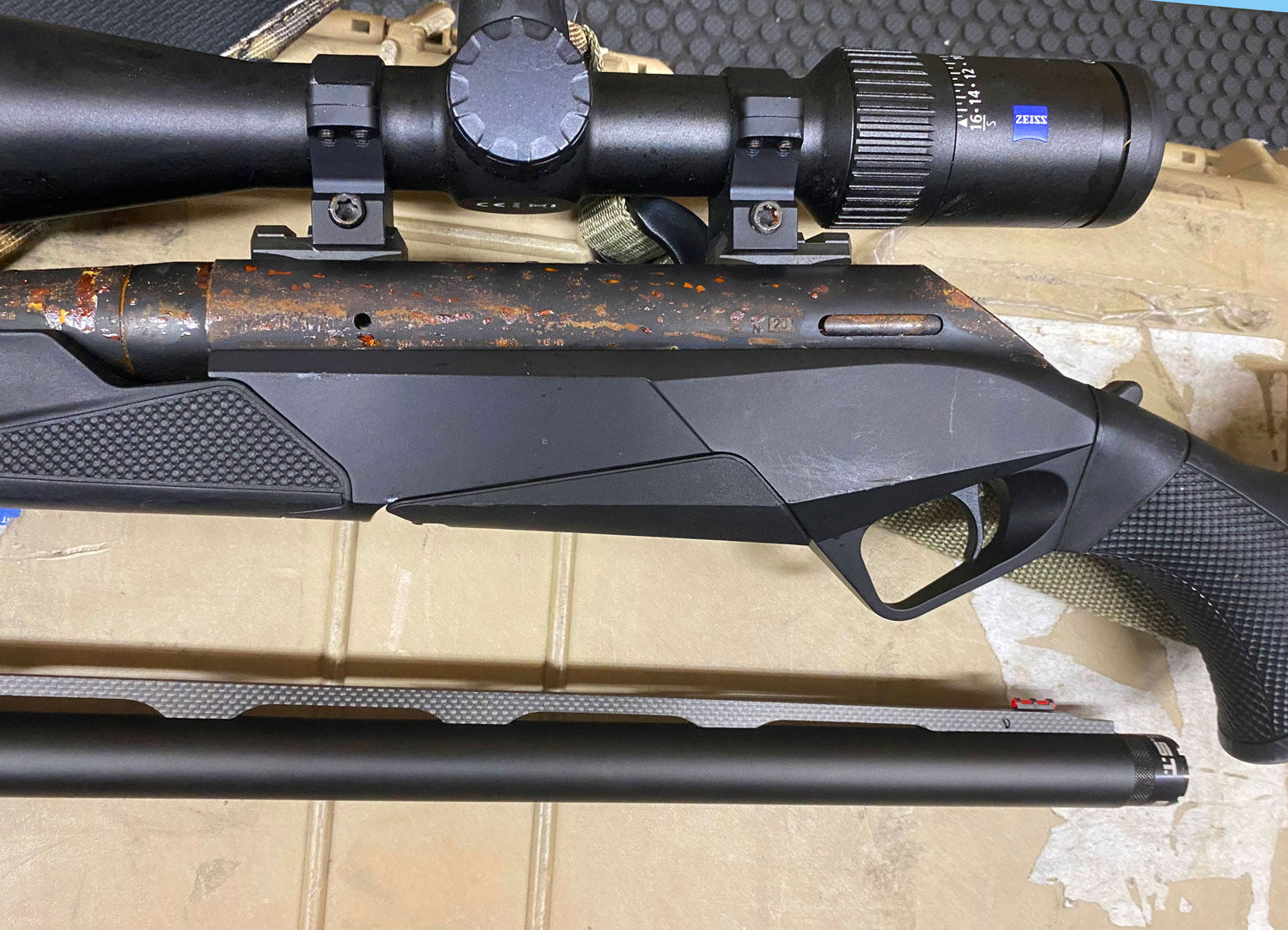
Note: Benelli’s new “BE.S.T.” coating performed well beyond expectations, as illustrated by the accompanying photograph of a non-“BE.S.T.”-coated rifle (top) and a “BE.S.T.”-coated shotgun barrel (below) from the same hunt. The “BE.S.T.” coating is black, non-glare, smooth to the touch and had no noticeable effect on gun performance or handling. It appears to be a significant step forward in metal protection for firearms.

